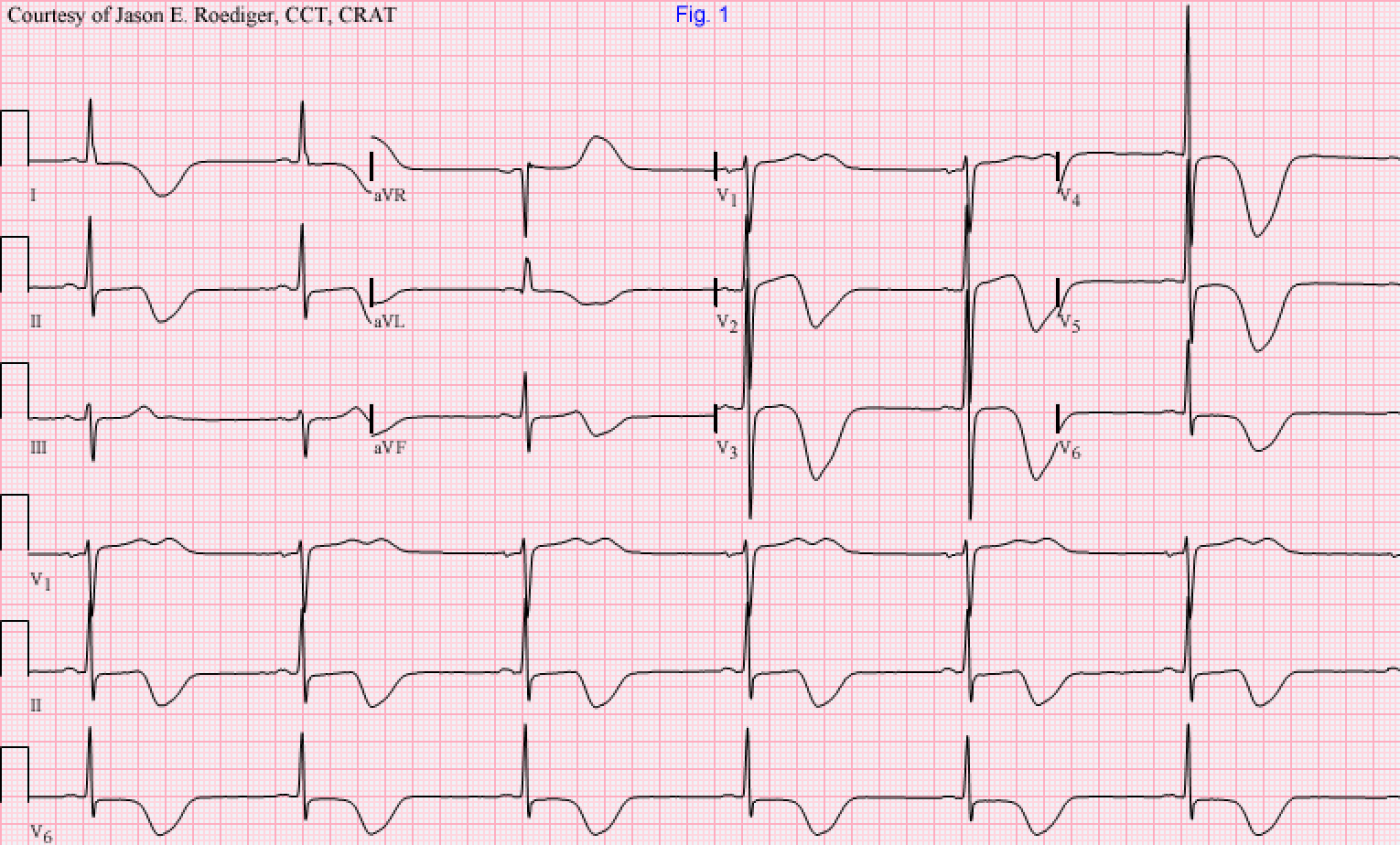When I first came across this dramatic ECG during a database search, the descriptive words “gross” and “distorted” both popped into my head. I had only one specific interpretation in mind and after a little bit of research, my suspicions were confirmed.
Patient’s clinical data: 70-year-old Hispanic man in the ICU with a history of HTN, diabetic nephropathy, and chronic renal insufficiency. Patient died 22 days later.
There are “classic” changes suggestive of this clinical disorder. As evidenced, sinus bradycardia frequently accompanies these changes.
Questions:
(1.) What is the probable cause here?
(2.) Can you name at least 4 other differential diagnoses?
-

- jer5150's blog
- Log in or register to post comments
All our content is FREE & COPYRIGHT FREE for non-commercial use
Please be courteous and leave any watermark or author attribution on content you reproduce.



Comments
Cool EKG
SB LQT U wave Dip T wave poss intracranial bleed, Poss MI or maybe both? LVH Poss notch T wave Ca++ abnormality? autonomic instability?
Hmm..
I'll give it a shot
1) I suspect some CNS event based on the large symmetrical inverted T-waves in Fig.2 and the bradycardia.
2) DDx may include LQT, hyperK, ischemia, leftsided strain or maybe LVA?
3) Primary disturbance is the long QT which increases risk of sudden death caused by multifocal VT (aka. Torsade de Pointes)
INTERPRETATION
Interpretation:
Marked sinus bradycardia (rate = 37/min) with clinical picture of Left Middle Cerebral Artery (MCA) stroke.
Comments:
Note the grossly enlarged, distorted, and deeply inverted precordial T and U waves. Prolonged QT interval: QT = 0.73s; QTc = 0.57s.
In addition to some of those mentioned above by "marionurse" and "simor", four other differential diagnoses are myocardial infarction, acute pericarditis, electrolyte disturbance, and drug effect.
Sources/References:
(1.) http://ajcc.aacnjournals.org/content/11/1/48.full.pdf
(2.) http://xa.yimg.com/kq/groups/19704990/1753038484/name/Giant+Inverted+T+waves+in+the+emergency+department+case+report+and+review+of+differential+diagnoses.pdf
(3.) http://www.ncbi.nlm.nih.gov/pmc/articles/PMC490091/pdf/brheartj00335-0048.pdf
(4.) http://lifeinthefastlane.com/wp-content/uploads/2010/11/ECG90501Subarachnoid-haemorrhage1.jpg
(5.) Marriott HJ. Practical Electrocardiography. 8th ed. Baltimore: Williams & Wilkins, 1988, p. 530-531
(6.) Marriott HJ. Marriott’s Manual in Electrocardiography. 2nd ed. Naples: Trinity Press, 1999, p. 152
Jason E. Roediger - Certified Cardiographic Technician (CCT)
[email protected]